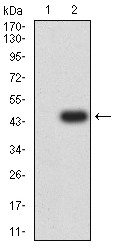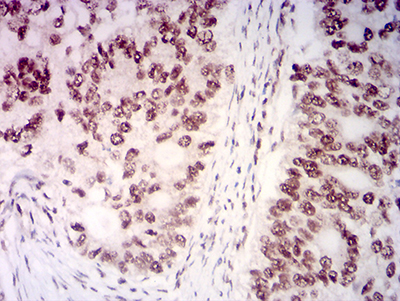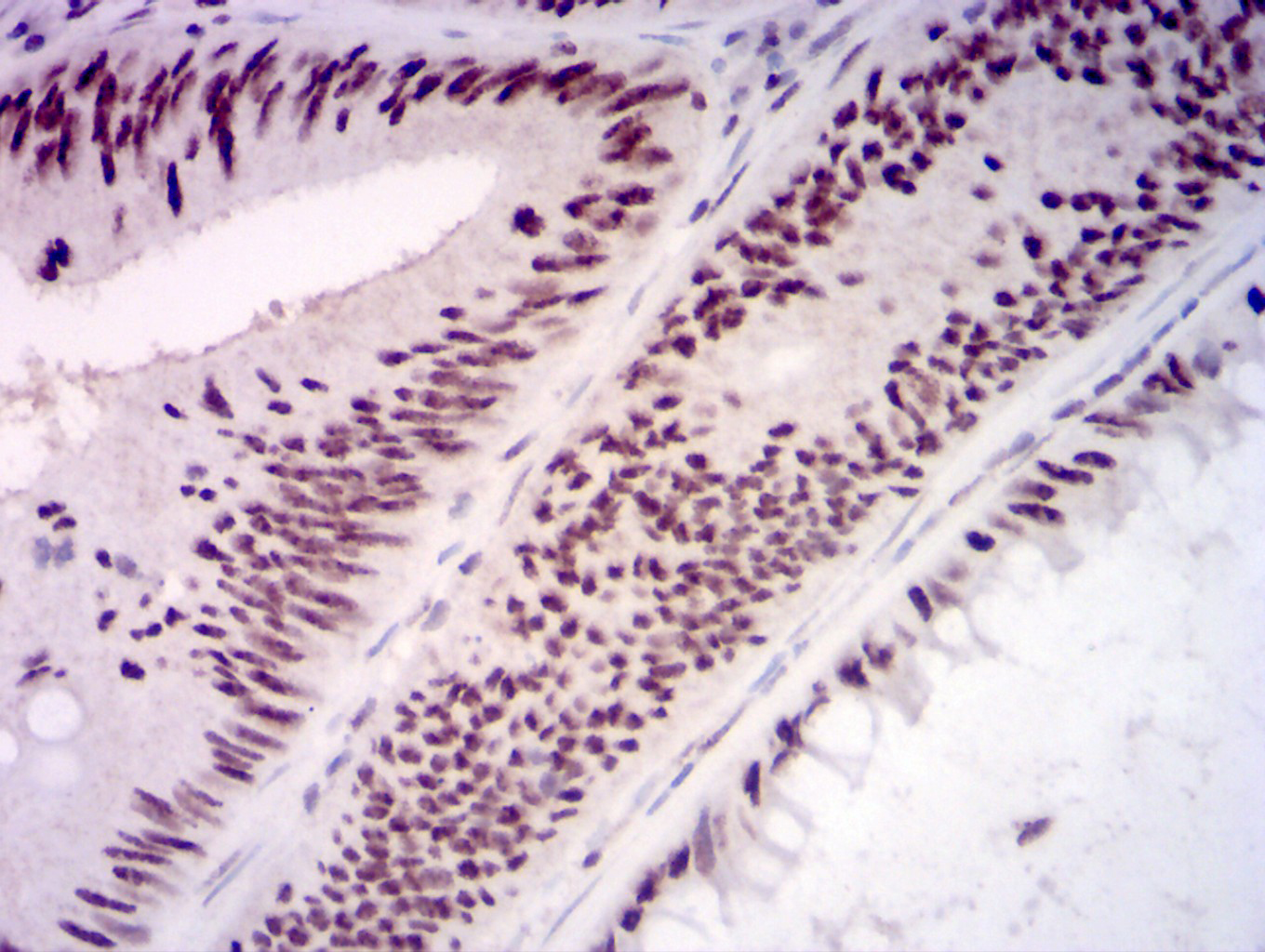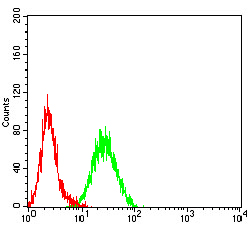-
Product Name
Anti-KMT2D antibody
- Documents
-
Description
Mouse monoclonal antibody to KMT2D
-
Tested applications
WB, IHC-P, FC
-
Species reactivity
Human
-
Alternative names
ALR antibody; KMS antibody; MLL2 antibody; MLL4 antibody; AAD10 antibody; KABUK1 antibody; TNRC21 antibody; CAGL114 antibody
-
Isotype
Mouse IgG2b
-
Preparation
This antigen of this antibody was purified recombinant fragment of human kmt2d (aa: 445-599) expressed in e. coli.
-
Clonality
Monoclonal
-
Formulation
Liquid, 1*PBS with 0.05% sodium azide.
-
Storage instructions
Store at +4℃ after thawing. Aliquot store at -20℃. Avoid repeated freeze / thaw cycles.
-
Applications
WB: 1:500-1:2,000
IHC-P: 1:50-1:200
FC: 1:100-1:200
-
Validations

Fig1: Western blot analysis of KMT2D against human KMT2D (AA: 445-599) recombinant protein. Proteins were transferred to a PVDF membrane and blocked with 5% BSA in PBS for 1 hour at room temperature. The primary antibody ( 1/500) was used in 5% BSA at room temperature for 2 hours. Goat Anti-Mouse IgG - HRP Secondary Antibody at 1:5,000 dilution was used for 1 hour at room temperature.

Fig2: Western blot analysis of KMT2D against HEK293 (1) and KMT2D (AA: 445-599)-hIgGFc transfected HEK293 (2) cell lysate. Proteins were transferred to a PVDF membrane and blocked with 5% BSA in PBS for 1 hour at room temperature. The primary antibody ( 1/500) was used in 5% BSA at room temperature for 2 hours. Goat Anti-Mouse IgG - HRP Secondary Antibody at 1:5,000 dilution was used for 1 hour at room temperature.

Fig3: Immunohistochemical analysis of paraffin-embedded cervical cancer tissues using anti-KMT2D antibody. The section was pre-treated using heat mediated antigen retrieval with Tris-EDTA buffer (pH 8.0) for 20 minutes. The tissues were blocked in 5% BSA for 30 minutes at room temperature, washed with ddH2O and PBS, and then probed with the primary antibody ( 1/100) for 30 minutes at room temperature. The detection was performed using an HRP conjugated compact polymer system. DAB was used as the chromogen. Tissues were counterstained with hematoxylin and mounted with DPX.

Fig4: Immunohistochemical analysis of paraffin-embedded rectum cancer tissues using anti-KMT2D antibody. The section was pre-treated using heat mediated antigen retrieval with Tris-EDTA buffer (pH 8.0) for 20 minutes. The tissues were blocked in 5% BSA for 30 minutes at room temperature, washed with ddH2O and PBS, and then probed with the primary antibody ( 1/100) for 30 minutes at room temperature. The detection was performed using an HRP conjugated compact polymer system. DAB was used as the chromogen. Tissues were counterstained with hematoxylin and mounted with DPX.

Fig5: Flow cytometric analysis of KMT2D was done on Hela cells. The cells were fixed, permeabilized and stained with the primary antibody ( 1/100) (green). After incubation of the primary antibody at room temperature for an hour, the cells were stained with a Alexa Fluor 488-conjugated goat anti-Mouse IgG Secondary antibody at 1/500 dilution for 30 minutes. Unlabelled sample was used as a control (cells without incubation with primary antibody; red).
- Background
-
References
- Clin Lung Cancer. 2018 Jul;19(4):e489-e501.
- J Cancer Res Clin Oncol. 2018 Jun;144(6):1025-1035.
Related Products / Services
Please note: All products are "FOR RESEARCH USE ONLY AND ARE NOT INTENDED FOR DIAGNOSTIC OR THERAPEUTIC USE"
